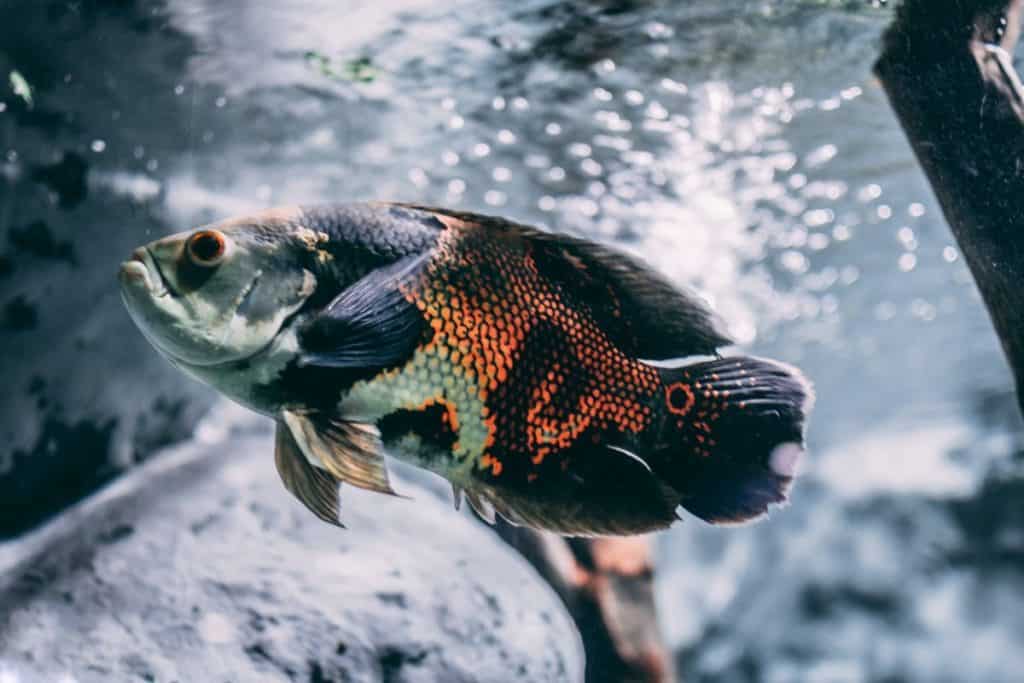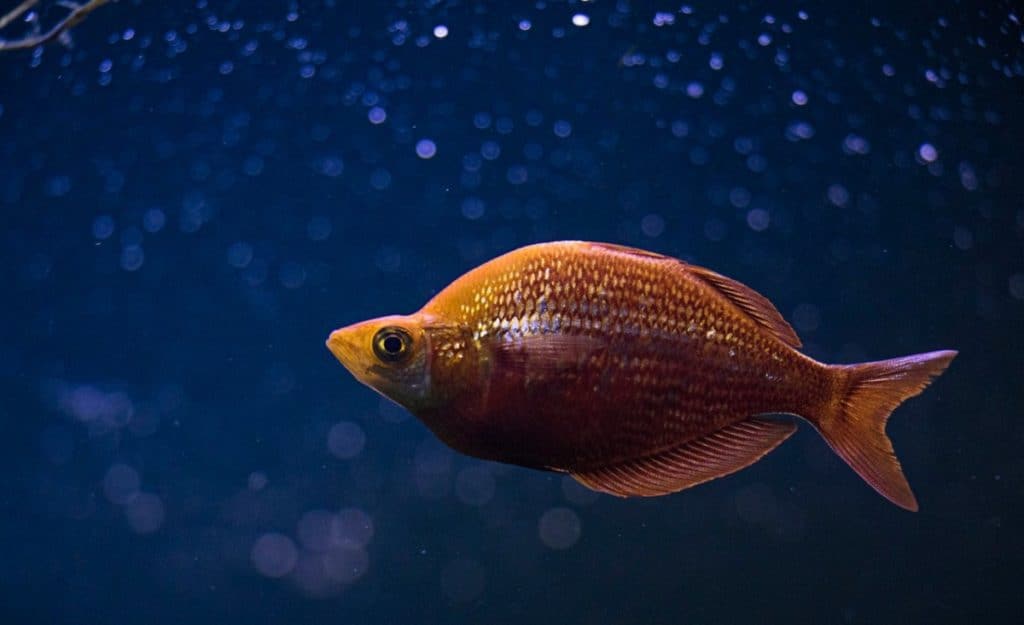
Ever wondered if fish are producers, consumers, or decomposers? Well, if you’re fascinated by nature and want to find this out then you’ve come to the right place as this article discusses the relationship of fish to our ecosystem.
Are fish producers, consumers, or decomposers? Fish are not producers because they aren’t able to produce their foods as plants can. Fish are also not decomposers because they cannot break down dead or decaying organisms as fungi can. They are, however, consumers because they feed on other living organisms.
There are different categories an animal that’s a consumer can fall in depending on where it feeds on. These different categories are called “Primary Consumers”, “Secondary Consumers”, “Tertiary Consumers”, and “Quaternary Consumers”.
The primary consumers feed on the primary producers, the secondary consumers feed on the primary consumers, the tertiary consumers feed on the secondary consumers, and the quaternary consumers feed on the tertiary consumers.
You can therefore also be sure that every just mentioned category will contain at least one certain species of fish as, for example, a shark will fall within the category “Quaternary Consumers”.
Why Are Fish Not Producers?
Ecologically speaking, a producer is an organism that generates its food instead of gathering it from the ecosystem. Plants are producers. Fish cannot turn sunlight into food as plants do so they cannot be producers. Instead, they access valuable nutrients by eating animals that eat producers.
Seaweed, for example, is a producer, zooplankton is a primary consumer because it subsists on algae, and a clownfish is a secondary consumer because it accesses the seaweed’s nutrients by eating the zooplankton.
What Kind of Consumers Are Fish?
Most of the fish species belong to the category “Secondary Consumers” but there are also fish species that belong to the categories “Primary Consumers”, “Tertiary Consumers”, and “Quaternary Consumers”. It is dependent on the fish species in question to which consumer category the fish belongs.
The general rule is, the bigger the fish, the bigger its food. While some fish species eat plankton, gastropods, and small herbivorous fish which feed directly from plant sources, other larger fish consume the fish (secondary consumers) which eat these smaller ones. This makes them tertiary consumers.
Are Clownfish Consumers?
Clownfish are primary and secondary consumers due to their omnivorous diet. They mostly eat invertebrates (primary consumers) such as zooplankton, worms, and crustaceans which makes them secondary consumers. However, clownfish also eat plant producers like algae so they are also primary consumers.
So, as you can already tell, one fish species doesn’t have to belong to only one category of consumers. Some species will feed on just about anything if this would contribute to their survival.
Are Jellyfish Consumers?
Jellyfish mostly eat primary consumers such as shrimp, small crabs, sea mollusks, and zooplankton. This mainly makes them secondary consumers but there are also jellyfish species out there that eat aquatic plants and algae which also makes some jellyfish species primary consumers.
So, you can be sure that not every jellyfish species can be categorized as both primary and secondary consumers as most jellyfish species will only feed on primary consumers.
Are Starfish Consumers?
It might surprise you to learn that starfish can be categorized as primary, secondary, and tertiary consumers. They may not look like successful predators as they do move extremely slowly but starfish are capable of preying on primary producers, primary consumers, and secondary consumers.
Starfish are opportunistic omnivores. They prefer to eat other animals but will also consume plant matter. If a fish becomes stuck or injured and is unable to move then they will happily eat it whether the species is a primary or secondary consumer.
Are Mosquito Fish Consumers?
Mosquito fish are both primary and secondary consumers due to their omnivorous diet. The species mostly eat small invertebrates (primary consumers) such as zooplankton, beetles, mites, and mosquito larvae making them secondary consumers. However, mosquito fish also feed on producers like algae.
You won’t see them eating secondary consumers, however, as the animal species that belong to that category will likely be too large for them to eat, which will not be practical, of course.
If you can’t get enough of learning about fish then I encourage you to check out the “Fish Category Page” which consists of various articles that give answers to fish-related questions.
Are Clownfish Primary Consumers?
Clownfish are an omnivorous species which means they fit the classification of both a primary consumer and a secondary consumer. Like all the other primary consumers that live on this earth, they will eat plants such as algae.
However, clownfish are not vegetarian and also eat zooplankton, worms, and crustaceans, making them secondary consumers as well. Clownfish are the only species capable of living close to and scavenging food from sea anemones that are another type of secondary consumers.

Are Small Fish Primary Consumers?
Small fish are both primary and secondary consumers because they can survive by eating only plant-based foods and they can also survive by eating plant-eating organisms (primary consumers) such as zooplankton, crabs, beetles, and larvae.
It’s not unheard of for some small fish to be tertiary consumers but their ability to eat other secondary consumers is largely dependent on their size. For instance, mirror dory fish sometimes feed on jack mackerel (secondary consumers) which, in turn, feed on larvae, crustaceans, and shrimp (primary consumers).
Are Clownfish Secondary Consumers?
Clownfish can be considered secondary consumers because they consume plant-eating organisms (primary consumers) such as small crustaceans, worms, beetles, larvae, and zooplankton. They are mostly carnivorous, so primary consumers make up most of their diet.
However, clownfish will sometimes get nutrients directly from plants. This means they are primary and secondary consumers in the ecological food chain.
What Type of Fish Are Primary Consumers?
Pretty much all small fish species are considered primary consumers but not exclusively. Most are primary and secondary consumers because their diets are omnivorous. Examples of fish species that are primary consumers are the dwarf pufferfish, the neon tetra, and the betta fish.
Other examples of fish species that are primary consumers are the harlequin rasbora, least killifish, mickey mouse platy, and sparkling gourami.
What Type of Fish Are Secondary Consumers?
Lots of fish species are secondary consumers because it’s rare for fish to be vegetarian. Species like, for example, pacus, silver dollars, Farlowella fish, and mollies eat plant-based foods but do eat other creatures in the wild as well which makes them both primary and secondary consumers.
The majority of fish species eat the bodies of plant-eating organisms (primary consumers) in some fashion even if it’s just the occasional zooplankton or bloodworm.
So the list of secondary consumers that live in our seas is indeed very long. It includes species like crayfish, clownfish, starfish, mosquito fish, herring, sardines, and bluegill.
Why Are Fish Not Decomposers?
Fish can’t be categorized as decomposers because they can’t break down decaying or dead organisms. A starfish is an example of an animal that is a decomposer. Starfish are, however, not classified as fish, they are echinoderms, a type of invertebrate marine organism.
Marine decomposers include fungi, some species of worms, some types of crustaceans and mollusks, echinoderms, and many different types of bacteria. In frigid ocean waters, the only successful decomposers are fungi and bacteria.
Check out the video below if you want to learn more about what decomposers do and also if you want to have a few more examples of animals that are decomposers.
Conclusion
So, to conclude, fish are not producers nor are they decomposers. Within the food chain, fish are consumers. They do not generate their food or break down dead or decaying organisms but instead consume the nutrients of plants when they’re herbivorous fish or when they’re carnivorous then they’ll consume other living organisms.

